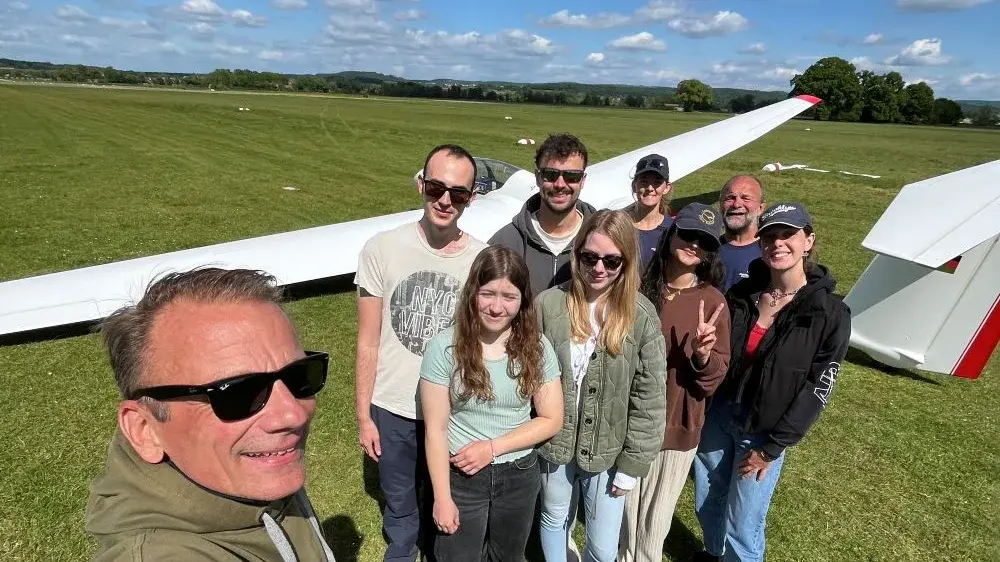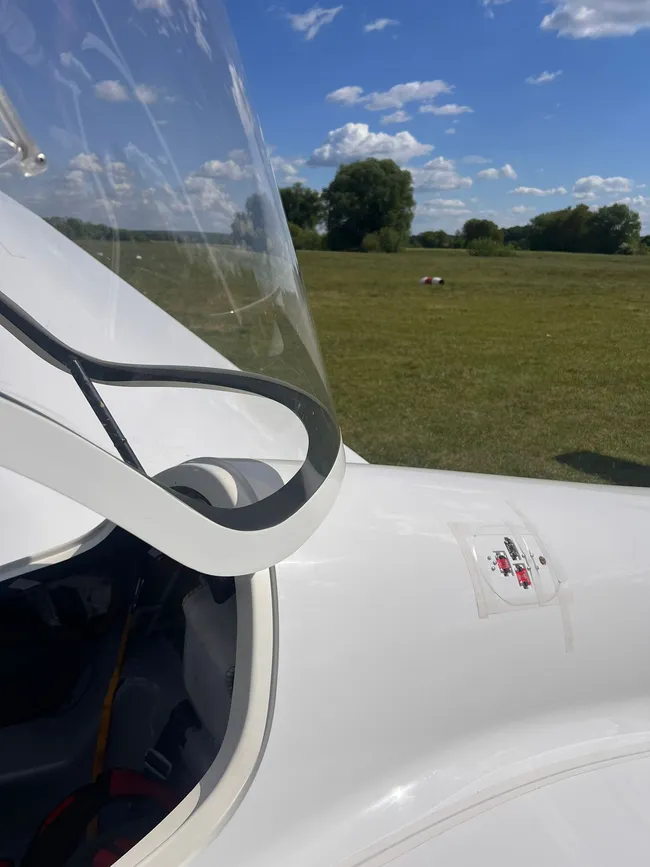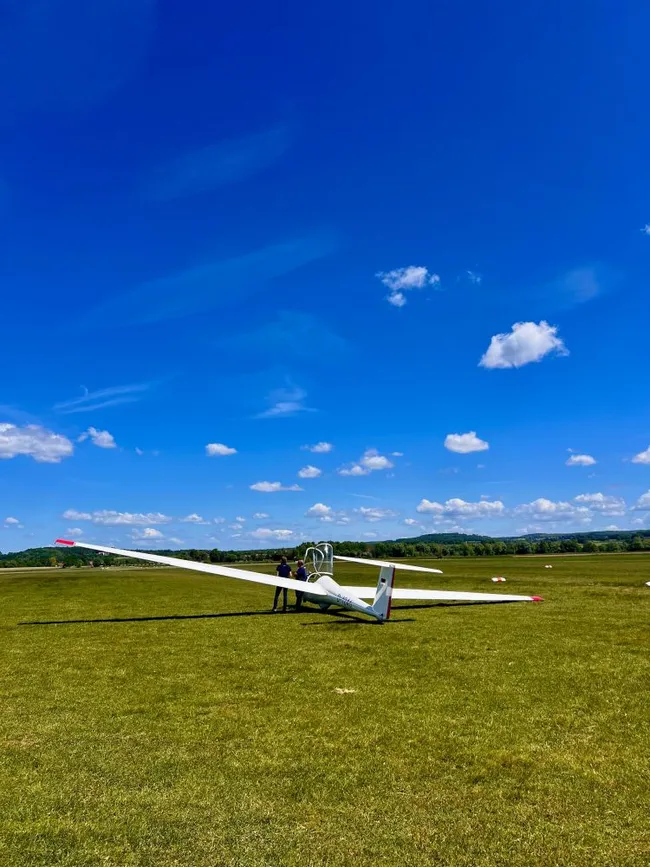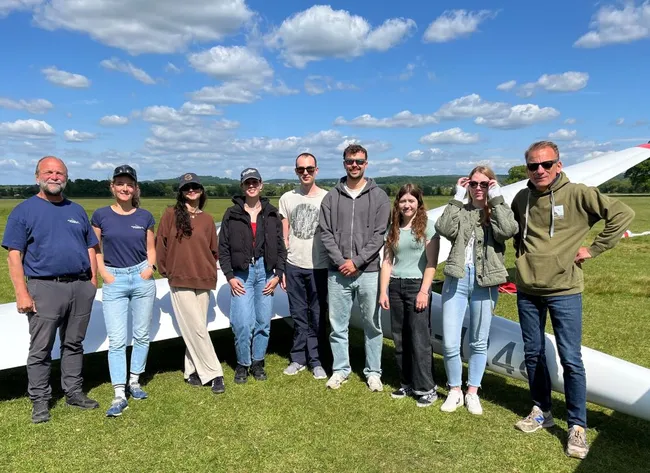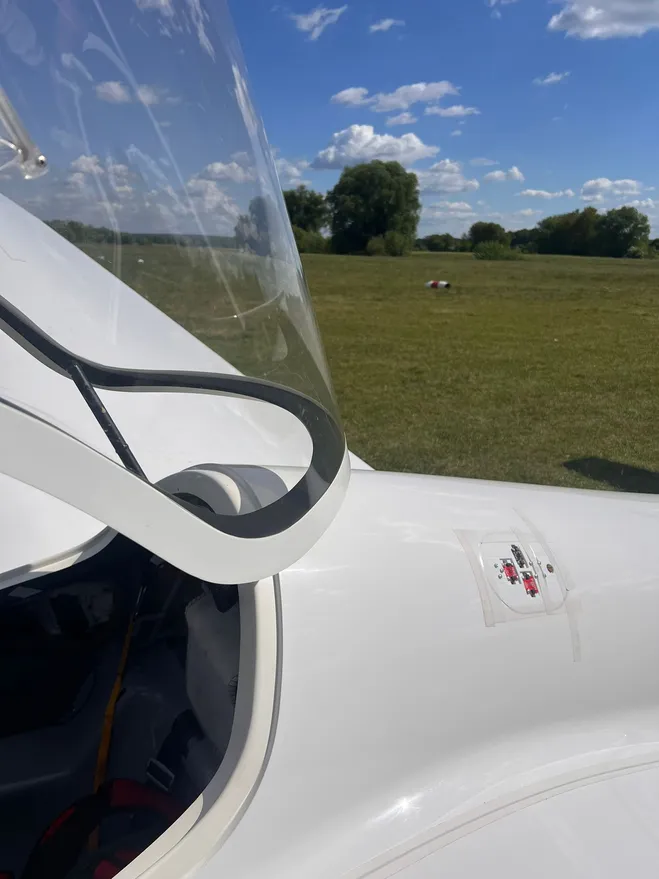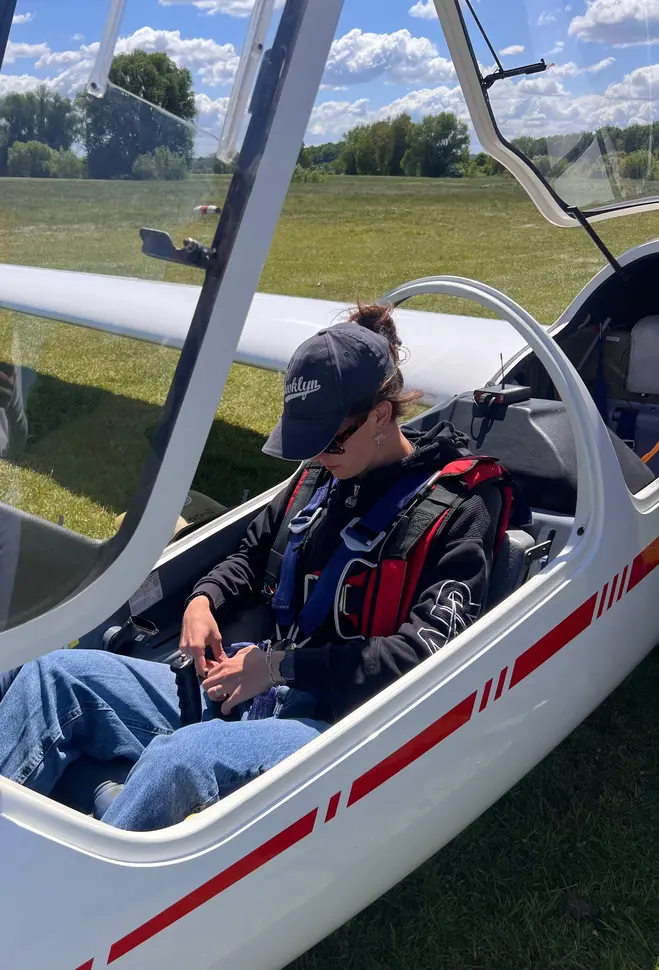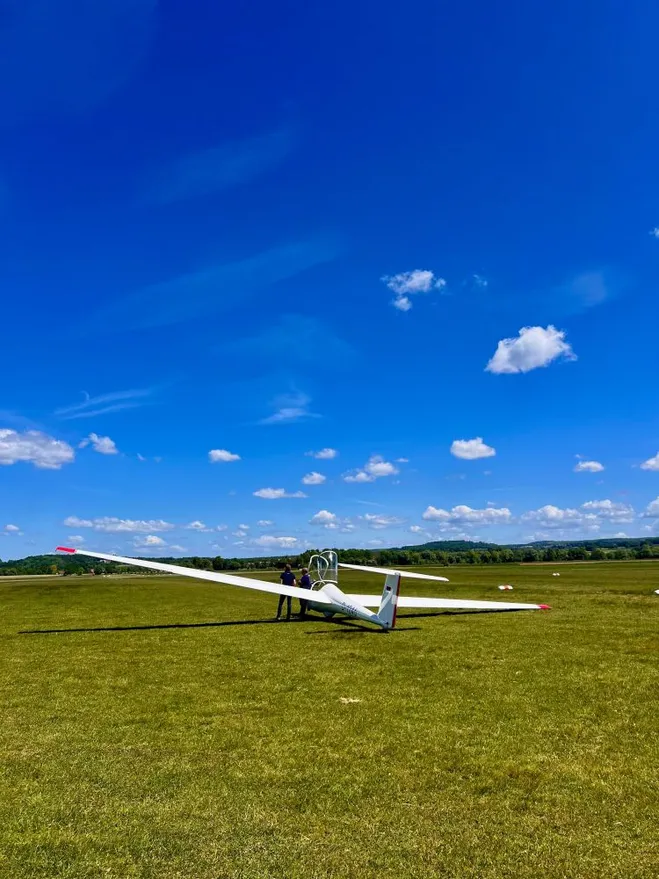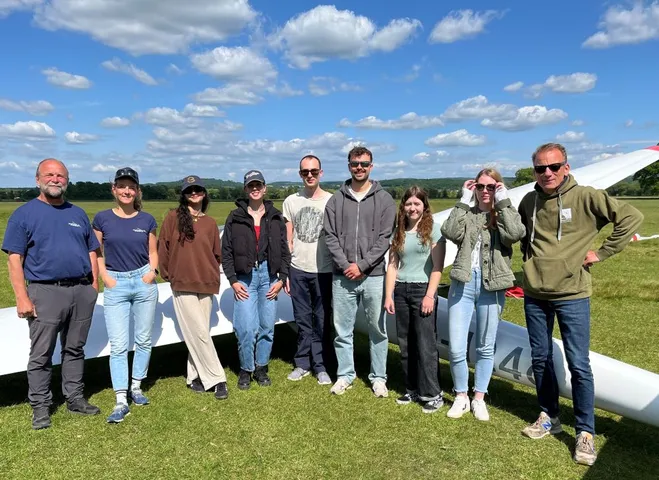As part of the course "Avionics Design and Modeling" in the Electrical and Aeronautical Engineering degree program , a student project group from Hochschule RheinMain had the opportunity to test an airworthy measuring system under real conditions on 16 May 2025. This involved the high-frequency measurement and recording of temperature, humidity and air pressure together with the exact position.
The background to this is the question of whether the lift of the rising air mass is primarily generated by temperature differences or by differences in humidity. The HSRM has been working on this project for some time with Akaflieg Frankfurt, the student gliding group at Goethe University Frankfurt am Main.
The flight day with the Akaflieg took place at the glider airfield in Ziegenhain (North Hesse). The aeronautical project was supervised by Degree Program Head Prof. Dr. Martin Müller, who supported the group on site.
The goal of the flight day was to test the further developed measuring system. The current project group, consisting of Milena Herr, Tim Mares and Nils Stengel, focused in particular on calibrating and improving the software in order to significantly increase the accuracy of the atmospheric data recorded.
From study project to practical experience
The measuring apparatus is based on an Arduino Giga R1, which is used to record data on static pressure, total pressure, temperature, humidity and GPS position. All measured values are shown live on a display and simultaneously saved on a USB stick for later evaluation. The conversion from the original MSP430 microcontroller to the new platform had already been carried out in advance by Nicolas Hecker as part of an earlier project.
One specialization of this year's project work was the software. The code was extended so that the pressure sensor is automatically calibrated at the beginning. In addition, the current QNH value can be entered manually. This allows the height above sea level to be calculated precisely.
First certified flight
The flights carried out on May 16th in an ASK-21 glider represented the first official use of the measuring system with admission under aviation law. As part of an earlier bachelor's thesis in Mechanical Engineering, a supplementary type certificate ("minor change") was applied for and approved by the European Aviation Safety Agency (EASA) for the measuring equipment. This means that the system is now officially permitted to be carried in regular flight operations. The measuring equipment was successfully integrated on board and was able to record data during several flights.
Gliding for the first time
The day was not only a special experience for the project team. All the students who came along also had the opportunity to fly in a glider themselves. For many, it was their first contact with gliding, and their enthusiasm was correspondingly high.
"I would never have thought that flying could feel so easy and so intense at the same time. It was just really nice, I would fly again in a heartbeat," reports Berfin Cuban enthusiastically after landing.
Outlook
The data collected will now be analyzed. The goal is to better understand the influence of temperature and humidity on the glider's climbing behavior. The project is thus making an exciting contribution to applied aviation research at Hochschule RheinMain.
